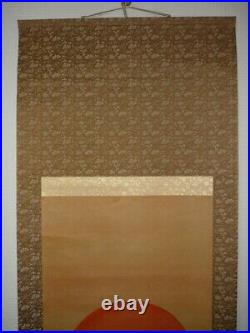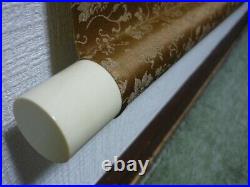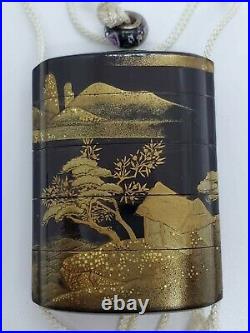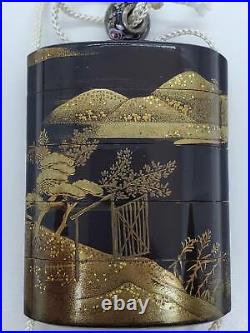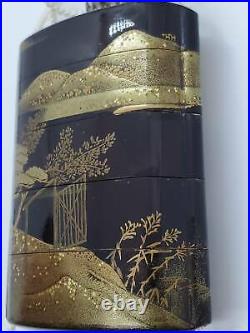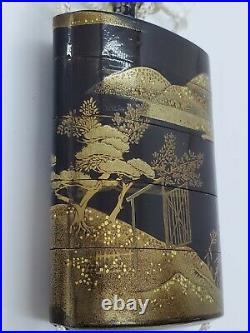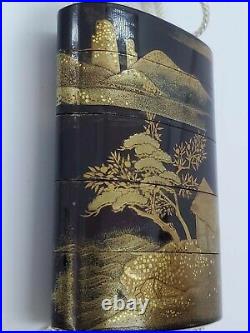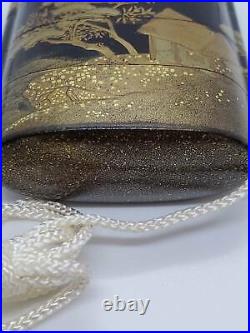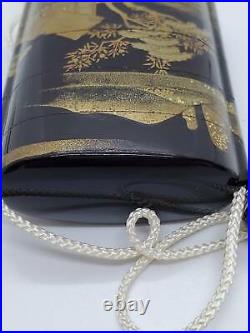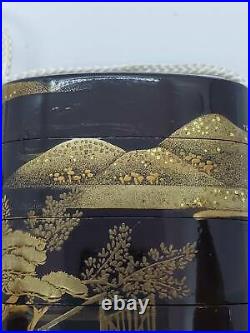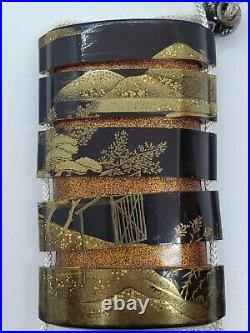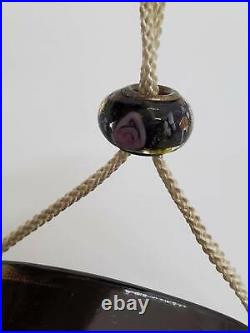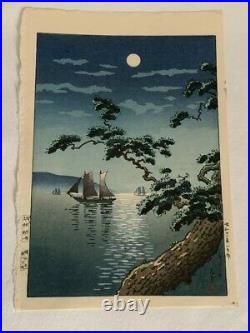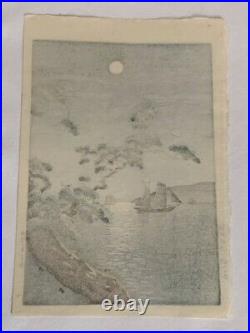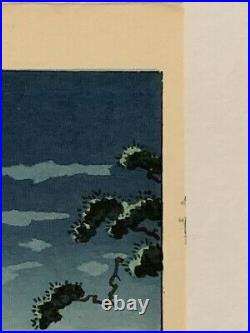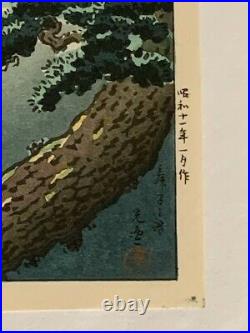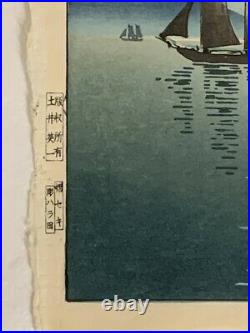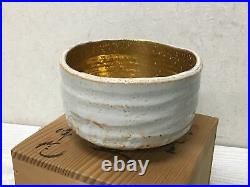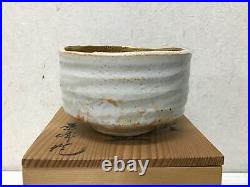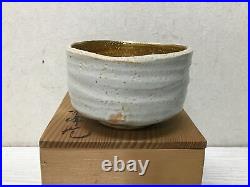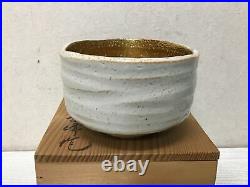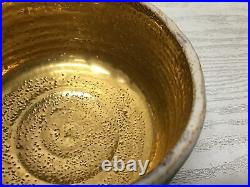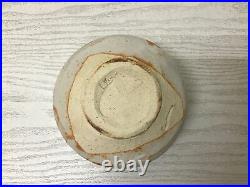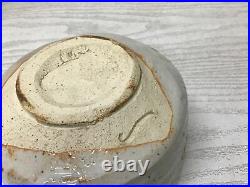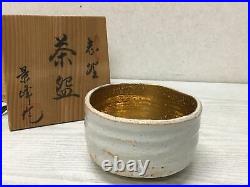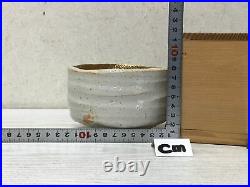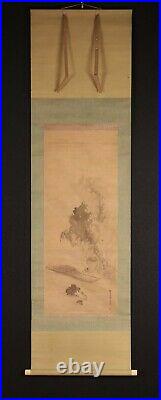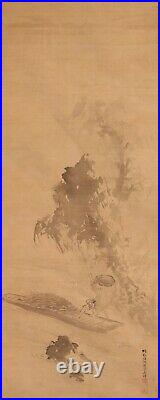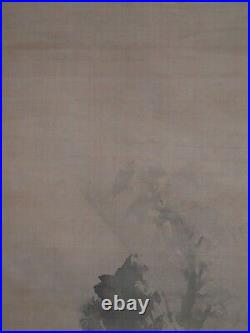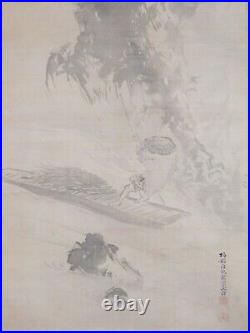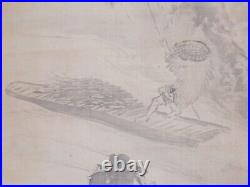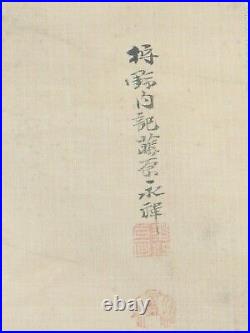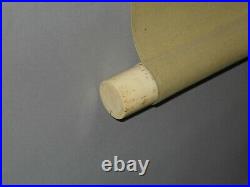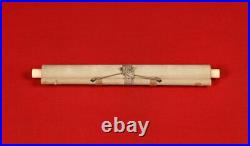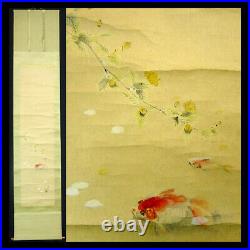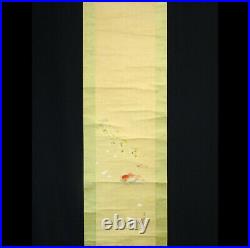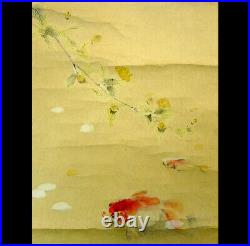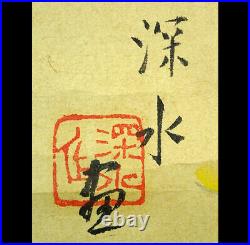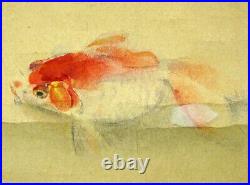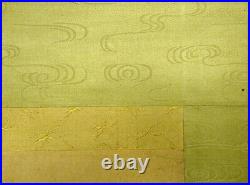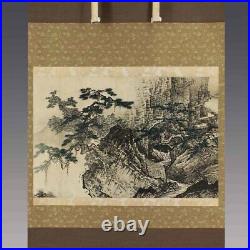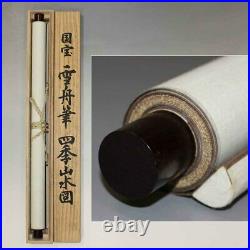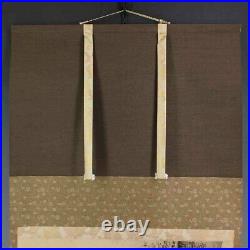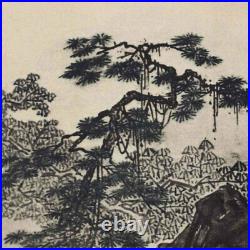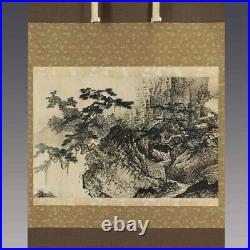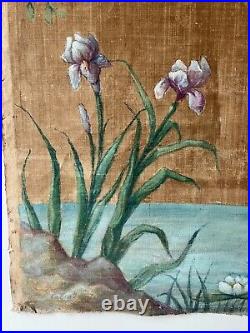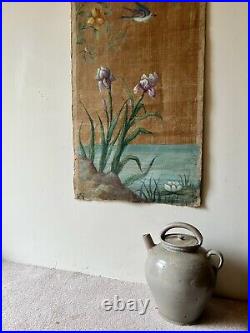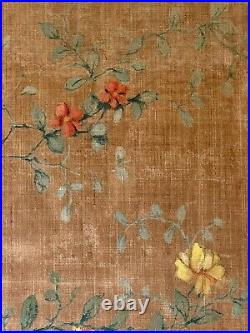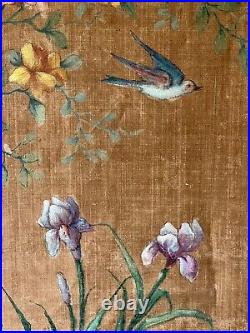

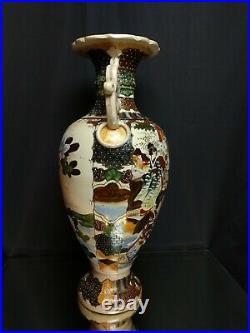
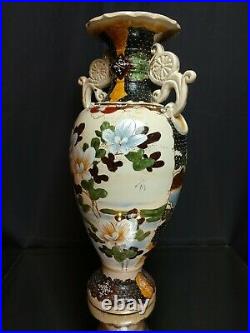

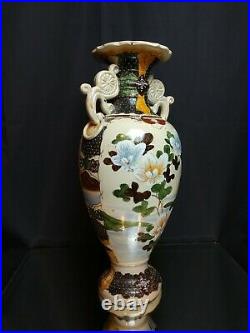
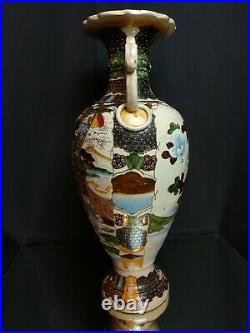
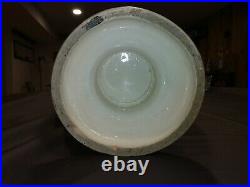


TALL 64 cm (25 in) Satsuma Floor Vase. With a complex and sublime design! This exceptional Satsuma vase stands an impressive 64 cm (25 in) tall! Featuring delicate moriage hand-paintings on an expansive ceramic canvas, this piece will truly be the centerpiece of any area it is put in! A kaleidoscope-like Geisha scene presents on one face of the vase with a myriad of colors, shapes, and textures. The reverse presents a brilliant yet comparatively subdued waterfront floral scene. Although the dense and expressive paintings are the assertive part of this piece, the lovely symmetry and accents in the ceramic add to the overall character. This floor vase was likely made in the early or mid-1900s. It is unsigned but is likely a product of a skilled Japanese kiln. The vase is in EXCELLENT condition. It suffers from no major damage, flaw, or repair. The painting is in almost perfect condition with very few signs of surface wear. There are about three hairlines to the top fluted lip that are subtle yet can still be seen and a few discoloration spots along the lip. It is possible that these were a product of the vases manufacture. This vase is exceedingly presentable and of choice quality for display. Height: 64 cm (25 in) Maximum Circumference (not including handles): 84 cm (33 in) Maximum width (not including handles): 27 cm (10.5 in). Your item will come from a pet and smoke-free home. If you are not satisfied, please let me know and allow me the opportunity to make it right. Thank you for looking and I look forward to having your business! It is your responsibility to return the item to me in the same condition it was sent to you. The item “2 FEET TALL! Antique FLOOR VASE Japanese Satsuma Moriage Hand Painted VTG 63 cm” is in sale since Friday, November 26, 2021. This item is in the category “Antiques\Asian Antiques\Japan\Vases”. The seller is “certainlybenbetter” and is located in North Ridgeville, Ohio. This item can be shipped to United States, Canada, United Kingdom, Denmark, Romania, Slovakia, Bulgaria, Czech republic, Finland, Hungary, Latvia, Lithuania, Malta, Estonia, Australia, Greece, Portugal, Cyprus, Slovenia, Japan, China, Sweden, South Korea, Indonesia, Taiwan, South africa, Thailand, Belgium, France, Hong Kong, Ireland, Netherlands, Poland, Spain, Italy, Germany, Austria, Bahamas, Israel, Mexico, New Zealand, Philippines, Singapore, Switzerland, Norway, Saudi arabia, Ukraine, United arab emirates, Qatar, Kuwait, Bahrain, Croatia, Malaysia, Brazil, Chile, Colombia, Costa rica, Panama, Trinidad and tobago, Guatemala, Honduras, Jamaica, Antigua and barbuda, Aruba, Belize, Dominica, Grenada, Saint kitts and nevis, Saint lucia, Montserrat, Turks and caicos islands, Barbados, Bangladesh, Bermuda, Brunei darussalam, Bolivia, Ecuador, Egypt, French guiana, Guernsey, Gibraltar, Guadeloupe, Iceland, Jersey, Jordan, Cambodia, Cayman islands, Liechtenstein, Sri lanka, Luxembourg, Monaco, Macao, Martinique, Maldives, Nicaragua, Oman, Peru, Pakistan, Paraguay, Reunion, Viet nam, Uruguay.
- Featured Refinements: Satsuma Vase
- Region of Origin: Japan
- Age: Unknown
- Primary Material: Porcelain & Pottery
- Maker: Unknown
- Original/Reproduction: Vintage Original
- Color: Multi-Color



